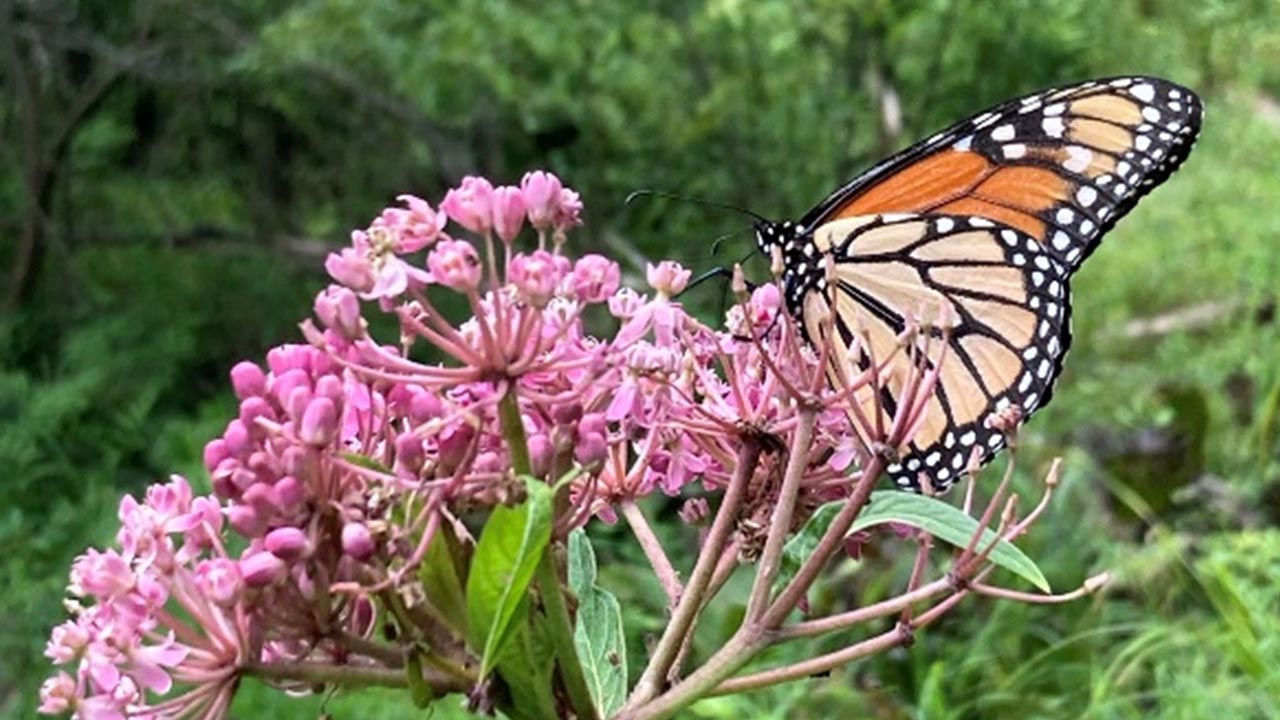
Perhaps you’ve wondered how you could make your yard eco-friendlier or perhaps how you could reduce the number of mosquitoes. There is a two-in-one solution: plant a native pollinator garden.
Our yards are usually devoid of taller native vegetation and shrubs that help soak up standing water. This creates stagnant areas where water can sit and attract mosquitos to lay their eggs. Also, turf grass provides next to no value to our native birds and bees, which are vital in pollinating our native plants.
Section off part of your yard where you can plant native wildflower seeds. Adding a nice border with stone can help keep this area looking neat.
We recommend prairie mixes that include common and butterfly milkweed, black-eyed susan, purple coneflower, and aster species. These flowers attract monarchs and other butterflies, which are important pollinators in our ecosystem.
Adding a flowing water feature can also help attract species of dragonflies, especially if your yard gets a lot of sunlight. The best thing about dragonflies is that they eat a lot of mosquitos!
Having a pollinator garden with a water feature is a sure way to attract them.
Birds also eat mosquitoes and other biting insects. Adding structure in the way of native shrubs will be sure to attract species such as eastern bluebird, eastern phoebe, Baltimore oriole, and yellow warbler, to your yard.
For smaller shrubs that provide berries, look at black chokeberry, common serviceberry, or winterberry.
If you want to add color to your yard and benefit pollinators, choose flowering dogwood, buttonbush, or redbud.
Most importantly, make sure the plants you choose are native to Ohio, and aren’t invasive species native to Europe, China, or Japan.
For more tips, visit mentornature.com.
